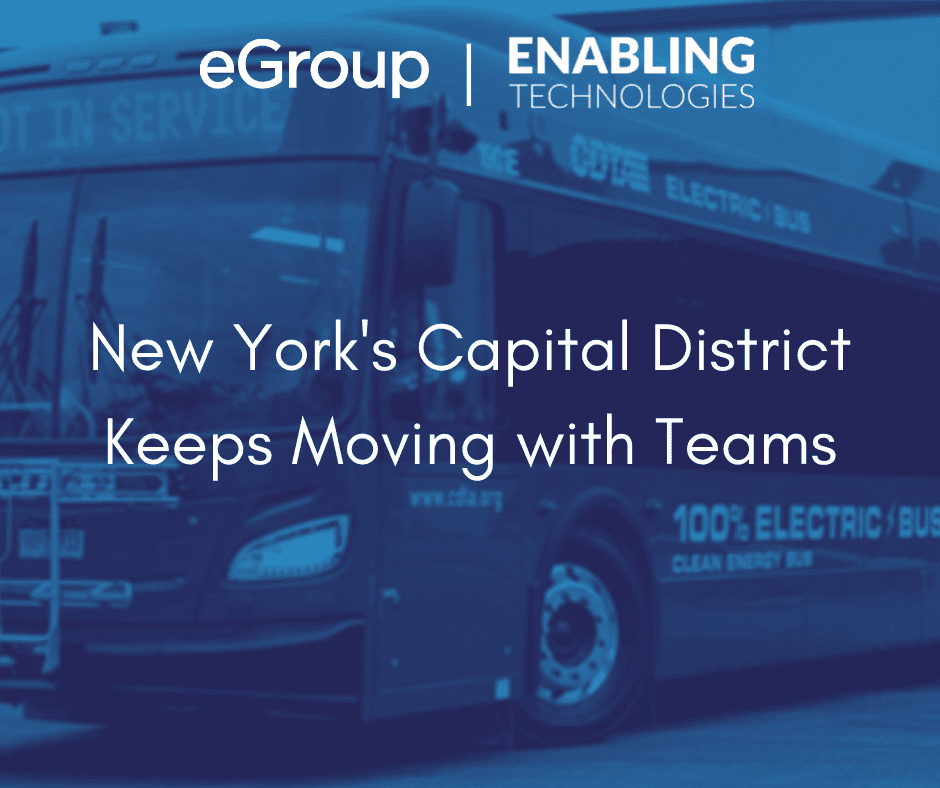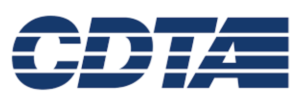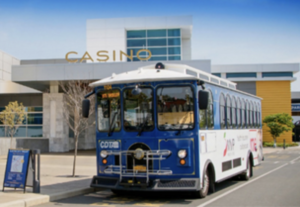NY’s Capital District Keeps Moving with Teams

New York’s Capital District Transportation Authority (CDTA) is made up of more than 700 men and women providing mobility services to 60,000 customers each day. CDTA’s employees are nimbly improving services for its citizens using the collaboration and calling capabilities of Microsoft Teams.
Capital District Transit Authority

Albany
NEW YORK
New Communication Platform
“We basically needed to overhaul everything, and the cost of doing that just for the Avaya system was a big reason why we started looking at other systems."
New York’s Capital District Transportation Authority (CDTA) more than 700 men and women providing mobility services to 60,000 customers each day. CDTA’s employees are nimbly improving services for its citizens using the collaboration and calling capabilities of Microsoft Teams. Rich Fantozzi and Mary Palmatier were instrumental in the success of replacing CDTA’s Avaya PBX with Microsoft Teams Calling. Rich manages the IT operations Department at CDTA, overseeing services like networking and telephone systems. Mary manages the software and applications for CDTA’s Contact Center and phone system and provides some help desk support. They received sponsorship from Chris Desany, Vice President of Planning and Infrastructure.
CDTA rolled out its first electric battery-powered bus in January 2020, shortly after making a big phone system move. Planning to replace their aging on-premises Avaya IP Office system began years earlier. “It desperately required an upgrade,” began Fantozzi, “which would have required us to move to IP phones and to upgrade our Enghouse Contact Center.” ”We basically needed to overhaul everything, and the cost of doing that just for the Avaya system was a big reason why we started looking at other systems,” added Palmatier. Continued Fantozzi, “We knew that we were going to have to replace 200 phones on peoples’ desks, implement new hardware, and train people on the new system, even if we stuck with Avaya. The project was going to be big either way.”
CDTA connects several communities over an extensive geography of 2,300 square miles. They’re used to covering a lot of ground. As such, Fantozzi’s team began an extensive search for next-gen options. “We were looking for a cloud-based unified communication and collaboration platform,” explained Fantozzi. “We were looking at the Cisco and Mitel systems of the world, and they seemed a little bit too complex for what we wanted, especially in terms of the integrations with Outlook. Their add-ins weren’t fluid. We are a big Microsoft shop; we have Office and we’re on Windows. Our first demo of Microsoft just fit more naturally into the environment and you could tell where it was going.”
Mary was hearing some needs from the community as well. “We had some features that were helpful, like voicemail to email, but we didn’t have enough. People were constantly asking ‘How do I know if they’re available to call?’ Being able to talk to somebody over the computer and not need the phone, and having an app on the cell phone, was a big deal.”
Leveraging Licensing Investments
CDTA had already transported much of its infrastructure to Office 365. “Our Exchange migration and Active Directory integration had gone very well,” recalled Fantozzi, “and was proving its worth just in terms of the new features that we’re getting all the time from Microsoft. We figured with Teams, we would get something very similar, and the cost of moving from E3 to the E5 license was incremental. Now, suddenly, not only do we get a phone system, but we also get unified communications.”
“Having those licenses already purchased and set in place as part of what leaned us towards Microsoft,” agreed Palmatier.
Planning for Change
The Authority spends much time planning projects for its network of 50+ routes. The team knew that the phone system project couldn’t be taken lightly either.

Explained Fantozzi, “One of the things we talked about quite a bit was how our people were going to handle the change. Giving them phones with touchscreens and all these options for chatting and communications had to be as seamless as possible.”
Enter eGroup Enabling Technologies’ award-winning Adoption and Change Management team. “One of the things that really put eGroup Enabling Technologies above some of the other statements of work for the implementation of Teams were the training and rollout,” said Fantozzi.
“We used eGroup | Enabling Technologies' suggestions to communicate ahead of time letting people know about the changes in the next few weeks, and even a few months ahead of time,” explained Rich. “We had documents printed and signage hung in the office hallways for people to see. We had test phones out for people to play with, and we did training in small groups. We had videos to watch on their own time later.”
Added Palmatier, “That communication piece was customized for CDTA and the way we work. Even the documentation was customized for CDTA. All those ideas and the planning were communicated back and forth between us and eGroup Enabling Technologies. We welcomed eGroup | Enabling Technologies’ help to ensure we develop the right plan.”
“Another good thing that we did was a lot of 1-on-1 communication with the managers,” continued Rich. “It was being pushed from the top down. There was no one who did not know that it was coming! One of the biggest things with an organization spread out like ours is to make sure that everyone understands what’s coming down the pipe and how it’s going to affect them. We included people who may have only managed one or two people. We really wanted to make sure that everyone was included and felt that they could give us feedback. We set up a separate Team for them to give feedback, and they were free to email the group so that people could spread knowledge.”
Protecting Existing Investments
“One very big concern for me was that we have lots of peripherals here at CDTA, like conference rooms with SIP extensions, paging systems in our garages, and faxing. If there was a small thing that I thought was going to throw this entire project off it was that it was not being able to integrate those into Teams. Having a paging system in our garages was an absolute requirement.”
"eGroup Enabling Technologies really helped us with paging,” added Palmatier. “We were willing to get a quote and switch everything to SIP devices, but we only did that for one of our locations. The rest of them stayed analog. eGroup | Enabling Technologies helped us with the right equipment and the right setup.”
Other ROI Results
“Lots of expenses have gone down. Our basic telephony charges were $55,000 to $60,000 a year range, but our SIP provider costs are now $20,000 a year. The licensing that we would have spent on a new telephony system was basically even with the E3 to E5 license upgrade, and as far as I can see, the number of telephone issues that we have is not nearly as much as we had.” Palmatier agreed, “There’s been some soft ROI, since moves, adds, and changes are easier for me now. If somebody’s moving to another office space or if they’re going to work at home, there’s nothing new I have to do.”
The Buses are on time, As was the Teams Rollout
The timing of CDTA’s rollout was prescient. “We really fell into it at the right time,” Palmatier pointed out. “Having Teams and the call center software in place last March when people were forced to work from home was very helpful. If we didn’t have Teams already in place it would have been a much larger challenge.”
“Having Teams on my mobile device has been fantastic since we’re in and out of the office so much,” said Jaime Kazlo Watson, Director of Corporate Communications. Jaime’s opinion seems widely shared.
“We were looking at the statistics,” added Fantozzi, “and we had been getting good usage of Teams, the phone portion, and saw that chatting and Teams meetings were starting to increase. When March came, transitioning people was relatively easy. Once that happened, the increase in usage of Teams was just astronomical. You can see that in other statistics. The number of internal emails sent since last March has gone down by 40%.”
“We were ready for them to go slowly with all the features,” exclaimed Palmatier, “but they were fast-forwarded into it and the usage went up like crazy. I had very few of all those people reach out with technical issues or questions.”
VP Christopher Desany summarized by saying “When we first implemented Teams, it was a slow roll with adoption. Then the pandemic hit. We had to get people working remotely, and fast. Fortunately, 90% of the work was already done to enable this. Most of the remaining effort was procedural. Having this set up in place allowed us to spend most back-office workers home almost immediately, and stay productive (and in some cases, be more productive). Our Board of Directors was impressed at our ability to pivot so quickly.”
“We’ve gotten positive feedback from many, including our finance Department” shared Fantozzi. “They like to hang out together outside of work, so they were looking for more ways to interact on Teams beyond just meetings. We loaded up third-party trivia apps into their Teams environment, and they use surveys and other apps past the base functionality on a regular basis. There’s a big ecosystem out there behind Teams and we’re starting to see that.”
Fantozzi also noted the advancements of CDTA’s marketing department. “They have integrated our customer communication system, so they can stay within Teams and still interact with customers. When someone posts something on Twitter about CDTA, they see it come right into a Teams feed, and they can respond to that because they’re in Teams so much. Having all that capability in one place is becoming much more important.”
When the Authority makes decisions about service changes, they base them on the input of its customers and stakeholders that offer the best potential for ridership growth. “We have public meetings to get feedback about major service changes, and we use Teams Live Events,” outlined Fantozzi. “We had four times the usual attendance on the Live Event.”
The lead business sponsor for Live Event is Communications Director Watson, who cited “For us, Live Events is a game-changer. It opens a whole new way for us to have meetings. We can now extend our reach to include more stakeholders and meet them right where they are at, rather than requiring them to attend an in-person event at a physical location.” Since CDTA covers 2,300 square miles, that extended reach is much more convenient for attendees, and it eliminates the need to rent out a room and other expenses that come with hosting an in-person meeting.
“Everything happens together in Teams,” Fantozzi added. “When someone comes and asks, ‘Can we do this or can we do that,’ we look to Teams. Breakout rooms are a perfect example. We have been doing strategic planning at CDTA, and they asked for breakout rooms, and we could say, “Yes, Teams supports breakout rooms!”
Fantozzi summarized by saying, “I’m sure if we had to, we could have pieced something together back at the beginning of March to get a lot of these features, but we would have had a handful of different third-party things that we would have had to try to piece together. Joked Palmatier, “And the last thing we need is more passwords!” (for all those extra apps).
How we Provided Navigation
“eGroup Enabling Technologies helped us with almost everything,” Rich explained, “all the way from the statement of work to working directly with our telecom provider. They provided the actual implementation, training, the communication schedule, and support afterwards. It's been a great partnership.”
Mary appreciated eGroup Enabling Technologies’ attention to detail. “You guys really helped in planning the communications and training to our end users. Rolling it out, you were ready for any questions or issues that we had. The engineers setting up our SBC was extremely helpful and knowledgeable. It made me feel more comfortable when I had to go in and make changes. He even made a recording through Teams showing me how to make certain changes on the SBC, so he really helped in every spot.” Fantozzi concluded, “One of the ways we judge third parties is how easy it is to work with their technical folks and how competent we feel they are. With the people you have had working on your side, we’ve never had to question their competence. We can recognize when people know what they’re talking about and then do what they’re talking about. There were never any technical issues or outages because something wasn’t configured right. None of those little things that can kind of happen on a project of this size really happened. It was very smooth in terms of implementation, which is great from my standpoint.” For an organization with a customer service center answering 225,000 calls annually to support 15M+ passenger rides a year, smooth was the only option.

Hear from their Team
Contact Our Team of Experts Today!
Interested in how our team can provide you with the IT Services you need around the products and solutions you’ve acquired?
Contact our team to learn more.

